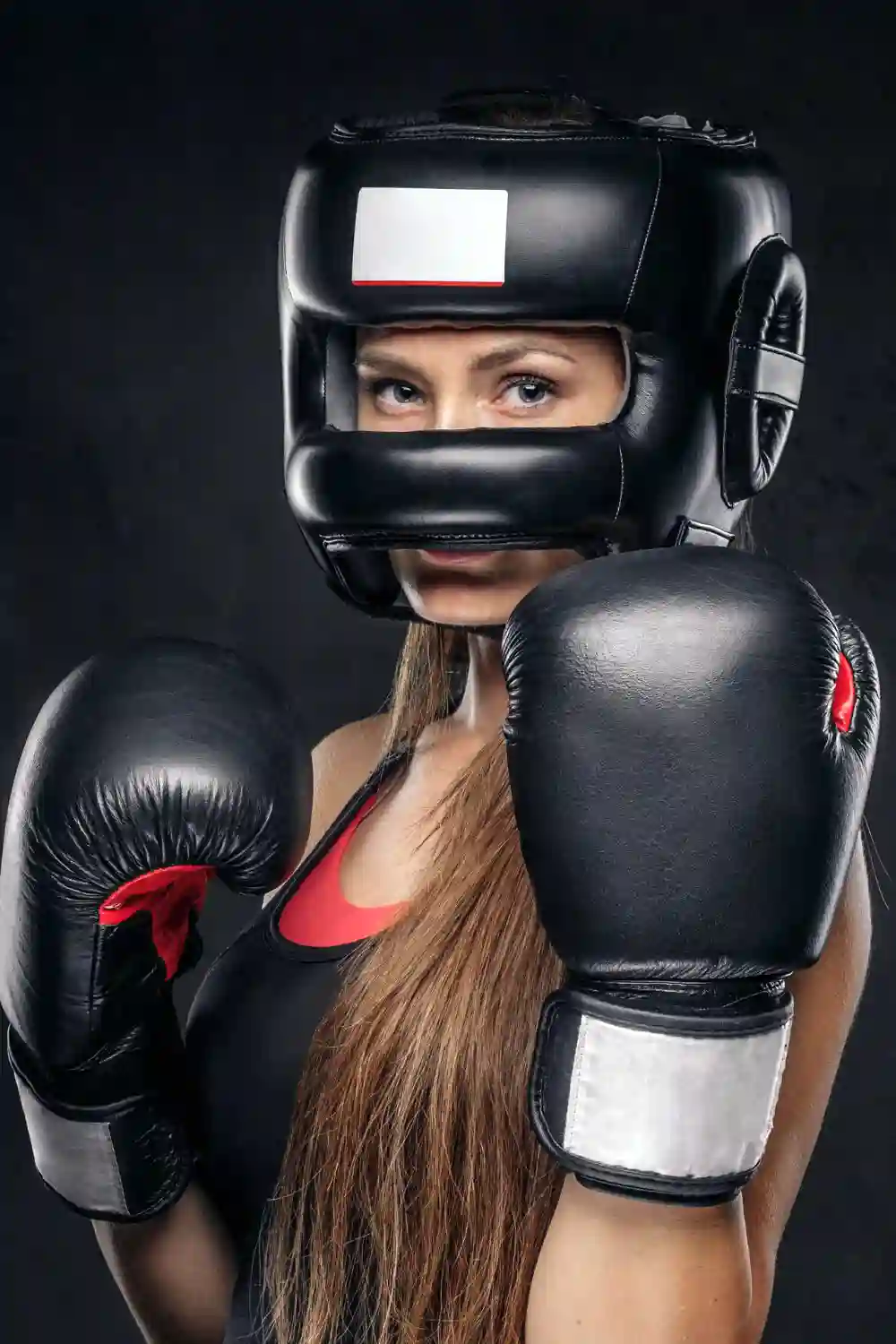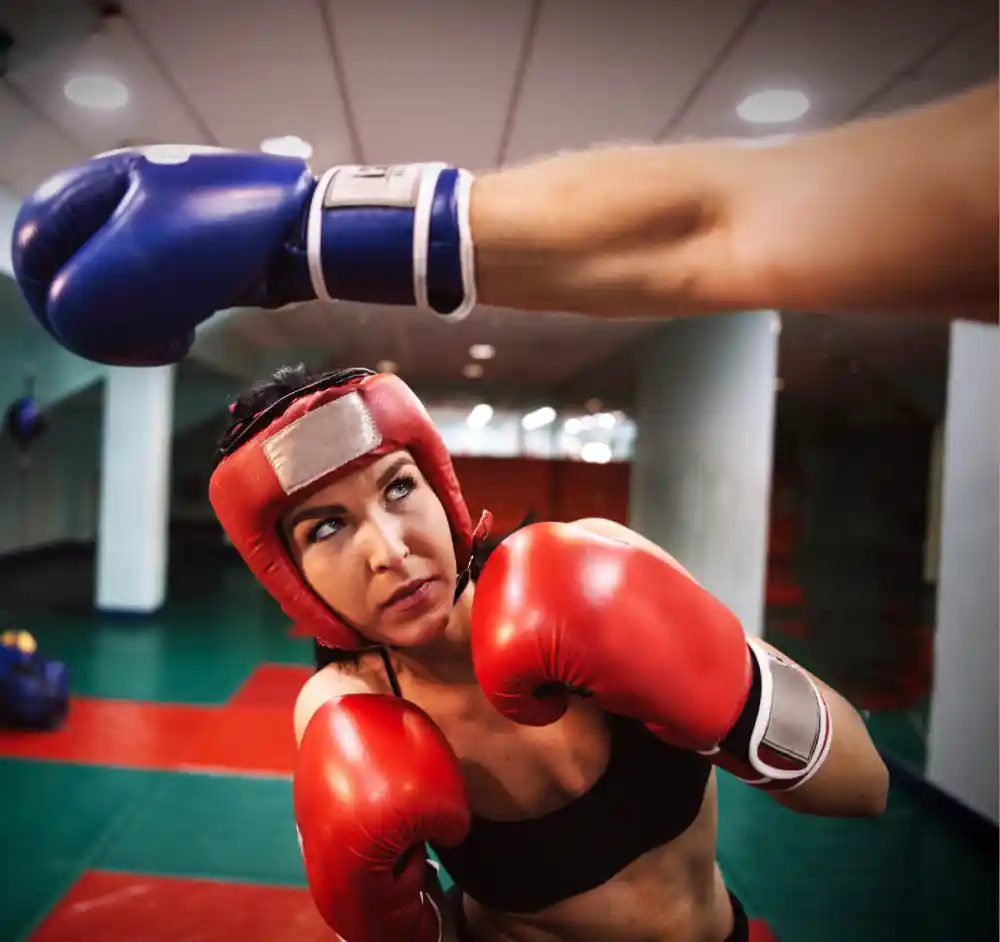Ever wonder why lady boxers strap on that protective headgear? Well, they’ve got plenty of good reasons to safeguard those precious brains inside the ropes! While headgear can’t fully stop injuries, it takes off the roughest edges of punches flying.
Unlike guys, girls’ skulls are extra thin, so blows do more damage. But there are still questions about concussions in women’s boxing since it’s a newer sport. Studies have mainly focused on men in the past.
That’s where the puzzles come in for officials. Without all the answers for ladies specifically, playing it safe is a smart policy for now. The Olympic committees want info before changing the rules, too.
So, for females, the gear stays on during matches. It’s an easy way to lessen risks a little until docs solve all the mysteries. Striking a balance between safety and the science is what matters most.
Come find out more about what these brave female fighters face inside that squared circle! The choices around protecting their heads aren’t as simple as they may seem.
Why do female boxers wear headgear?
Protection from Head Injuries
Female boxers wear headgear in the ring for their protection. As you know, head injuries are a serious risk in boxing since punches can deal major damage.
Women face higher dangers due to factors like their generally smaller size and thinner skulls compared to men. A punch packs the same force, whether hitting a man or woman, but women’s bodies also can’t handle it.
That’s why taking steps to minimize head trauma is so important. Headgear helps achieve this in a few key ways. It cushions the impact of punches by absorbing some of the force. This lessens the severity of blows to the head.
Headgear also shields vulnerable areas like the chin and jawline. On top of that, female boxers tend to have a more defensive fighting style where they take more punches. The protective gear is crucial for them.
While headgear can’t fully eliminate injuries, it certainly reduces risks considerably. Headgear and other habits like keeping the chin tucked in and rolling with punches allow female boxers to stay competitive in the ring.
Their safety has to be the top priority since one hard hit could cause long-term damage. With the right precautions, women can box without fearing for their long-term health.

Preventing Cuts and Bruises
Headgear does more than just protect your brain – it also keeps your face looking good. As you know from the previous answer, it shields you from cuts and bruises that could happen if an opponent’s gloves smash into your nose or cheeks. No one wants to be black and blue between fights.
The padding blocks those impacts and stops your skin from breaking open. Can you imagine boxing without that barrier? Every punch could end with your face bleeding all over.
Not only would that be painful, but open cuts risk infections if dirt gets inside. Yuck! With headgear on, you don’t need to worry about your face getting all cut up for those reasons.
It even protects your peepers from blows. Accidents do happen in the heat of battle, so the padding surrounding your eyes is a smart safety net. Why take the chance of an injury blinding you in one eye when headgear can deflect that punch? Your vision is way too important, so you might as well play it safe and shield those eyeballs.
Overall, headgear is a real win-win. It lets you fight without stressing about your looks or health getting ruined by facial damage. Just stay focused on battling in the ring!
Safety and Appeal for Spectators
You know how some people think boxing looks too rough and violent? Well, headgear helps change those negative views. When fans see headgear protecting you in the ring, it doesn’t seem as scary and brutal as watching bare heads get pounded. The padding takes some of the hardcore edge off.
This makes the sport more approachable and family-friendly. More casual viewers who wouldn’t want to see blood might feel comfortable bringing their kids. And that means boxing can attract new audiences and more paying customers in the seats!
The headgear cushions fall too, which is important because sometimes punches knock fighters out. Without protection, a hard knockdown could end with a serious injury. But with the headgear, even if you slip to the canvas, you have some padding between your skull and the floor.
Overall, wearing the gear just makes sense for keeping boxing appealing and profitable. Any safety measures that don’t affect your performance are a smart choice. You want the sport to grow, and headgear is a small thing that could make a big difference for fans and boxers like yourself.
Compliance with Competition Rules
Rules are rules, so when the refs say headgear is a must, you gotta wear it, right? That’s the case for many big competitions you take part in. The boxing organizations running the shows want everything to be fair.
If the rules only applied to some fighters and not others, that wouldn’t seem very fair. Like if you had to wear headgear, but your opponent didn’t – how is that equal? The gear can affect your performance and vision, after all.
The sporting bodies are also looking out for everyone’s safety. By making headgear mandatory for competitions like the Olympics, they know all boxers in the ring have some level of protection. It keeps standards high across the board.
The refs are also trying to get consistent, quality data on whether headgear truly lessens injuries. At the end of the day, the orgs just want what’s best for the sport and fighters. If they say the gear comes on, you respect that so you can focus on what matters – giving it your all inside those ropes!
The rules are there for good reasons, so you might as well follow them and thank the refs afterward for looking out for you all.

Lack of Female-Specific Research
Scientists just haven’t had enough time to study head injuries in women’s boxing like they have in men’s. It’s only been around as a serious sport for girls and ladies for a short while now. Because of that, the research on how hard hits might affect a female brain specifically is still lacking.
Doctors aren’t totally sure if girl heads are more sensitive to punches than guy heads. After all, everyone knows women have thinner bones in their skulls. And we know the female mind is built up a little differently, too. So, to stay on the safe side until they know for sure, it’s smart to wear headgear, right?
Running studies isn’t so easy either. Just finding enough female boxers to examine is tough since there aren’t as many of you fighting as males. And everyone gets punched differently based on their style and training. This muddles the results.
Rather than taking big chances, it’s best to assume the worst. If headgear offers even a little protection, why not wear it? The docs are just looking out for us until they solve the puzzle. In time, once research catches up, we may know for sure. But for now, playing it safe is the smartest plan.
Increased Risk of Concussions
Protecting your brain from concussions is super important as a female boxer. Studies show head injuries can affect women even worse than men. That’s because ladies’ skulls are thinner, so punches do more damage.
Our minds are built up a little differently, too, which plays a role. A concussion can really mess with your memory and thinking. Those symptoms take longer to go away if you’re a girl. Ouch!
Then there’s the way most ladies fight – moving around more defensively means absorbing more hits. All of these things add up to a higher risk of concussions for us.
That’s where headgear comes in handy. It can’t remove the threat entirely, but the padding takes off the edge of blows. Reducing force to the head is key. Other precautions like keeping your chin tucked and rolling with punches help too.
At the end of the day, you want to compete as long as possible without permanent damage. The gear is a simple way to look after yourself, so you might as well strap it on, right? Our brains need extra care in this sport.
Slower Reaction Times When Concussed
Keeping your reactions sharp is important in the ring, but concussions can mess with that. Studies show girls often experience slower thinking after a hit to the head compared to guys.
Just imagine – an opponent’s jab comes at you, and your brain needs an extra split second to tell your arms to block. In boxing, that fraction of time matters! One punch could totally catch you off guard.
On top of that, concussions bring annoying symptoms like nausea and dizziness that make training tough. The last thing you want is to feel sick every time you do roadwork. It’s bad enough dealing with a headache without also worrying about barfing!
That’s where headgear earns its keep. Even if it can’t prevent concussions fully, the padding removes each blow’s roughest edge. Less force to the dome means protecting your brain better to stay sharp.
No piece of equipment is a magic cure, of course. You still need to be careful. But headgear provides easy, helpful protection that could stop many injuries from happening. Doesn’t that give you the confidence to fight at your best without holding back? I say strap it on and rock the ring!
Historical Lack of Female-Specific Research
In the past, most research on head injuries has only looked at guys, not gals. Scientists just took men as the “default” and didn’t study women separately for long.
As a result, experts don’t have all the facts yet about how concussions might affect a lady boxer differently than a guy. We know girls seem more at risk, thanks to thinner skulls and such. But the long-term effects aren’t perfectly understood.
Without enough data specific to you all, it’s hard to create custom safety guidelines too. The regulators want to instruct carefully but just haven’t got the complete picture. They need more findings before overhauling the rules.
So, for now, the smart thing is playing it cautiously in the ring. Headgear provides an easy layer of protection until researchers catch up. The padding isn’t a magic shield, but every bit helps, right?
It’s great that more studies are including female subjects to solve the puzzle. In time, who knows – maybe gear won’t always be compulsory once we learn more. But for now, strapping up helps ensure your long career in boxing can continue strong and safe!

Summary
We have explained the many important reasons why female boxers wear protective headgear in the ring. Their health and safety have to be the top priority in this sport. Women face higher risks of head injuries due to factors like thinner skulls.
Headgear helps reduce these dangers in key ways. It cushions the force of punches, lessening blows to the brain. By shielding vulnerable areas, it also prevents cuts and protects vision. Wearing the gear makes the sport safer and more appealing to fans.
Competition rules often require all boxers to wear headgear for fairness. Regulators are also cautious until researchers learn more about head injuries, specifically in women’s boxing, which is still a newer area of study.
Since concussions pose extra threats to females, like potential memory issues, minimizing trauma through headgear is critical. It allows these brave fighters to compete to their full potential without fear of long-term health damage. Overall, strapping on the protective gear has many benefits.
FAQ
Why are male boxers not wearing head guards?
Male boxers do not always wear headgear because some believe it provides opponents an advantage by masking punching power and reducing the vision and mobility needed to dodge blows. Long-held views see headgear as a sign of weakness, stemming from early boxing days when wearing it was uncommon. Studies also suggest headgear may lessen knockouts for fighters relying on powerful strikes to win matches. Tradition and perceived disadvantages encourage some men to avoid using protective gear.
Why do female boxers wear bras?
Female boxers do not wear bras while boxing. The protective gear worn by female boxers typically includes breast protectors, groin protectors, and mouthpieces, but not bras. Breast protectors are important in boxing to provide additional protection and support for female boxers during training and competition. These breast protectors are specially designed and properly fitted to ensure comfort and safety. The purpose of wearing breast protectors is to minimize the risk of injury to the breasts during intense physical activity such as boxing.
Do female boxers wear groin guards?
Yes, female boxers do wear groin guards for protection during training and competition. Groin guards are designed to protect the pelvic area and genitals from accidental or illegal attacks below the belt. The Association of Boxing Commissions requires female boxers to wear properly fitted groin protectors. These guards are specifically designed to accommodate the female anatomy and provide the necessary protection during boxing matches. The use of groin guards helps ensure the safety and well-being of female boxers while participating in the sport.
Do professional boxers wear headgear?
Professional boxers do not wear headgear during their matches. Unlike amateur boxing, where headgear is commonly worn for safety reasons, professional boxers compete without headgear. This decision is primarily driven by several factors, including the desire to enhance the viewing experience for the audience, the perception that headgear can limit visibility and obstruct the boxer’s facial expressions, and the belief that the removal of headgear can lead to more exciting and dynamic fights. However, it’s important to note that safety remains a priority in professional boxing, and boxers undergo rigorous medical evaluations and adhere to strict rules and regulations to ensure their well-being during matches.
Do female boxers spar with men?
Yes, female boxers do spar with men in many boxing gyms and training facilities. While there may be fewer women in the sport compared to men, it is not uncommon for male and female boxers to spar with each other. However, it is important to note that sparring between men and women typically occurs when both parties are comfortable with it and have consented to the session. Safety and respect are paramount in these situations, and boxers should always prioritize the well-being and boundaries of their training partners.



